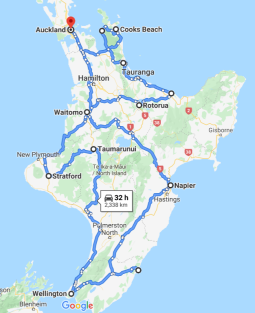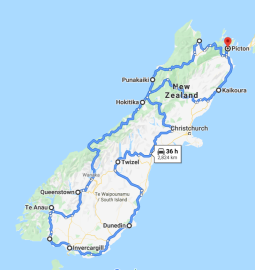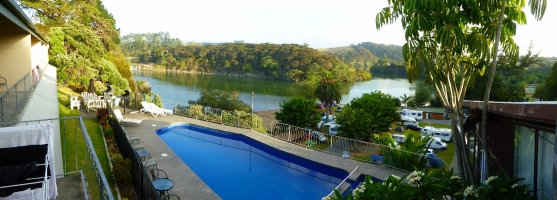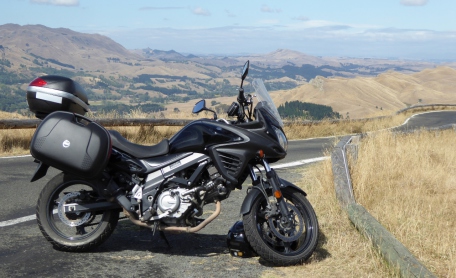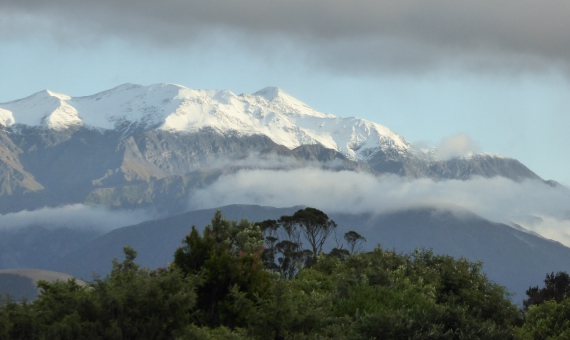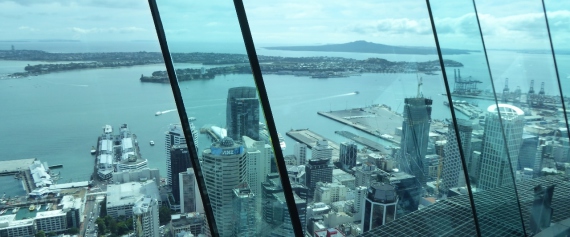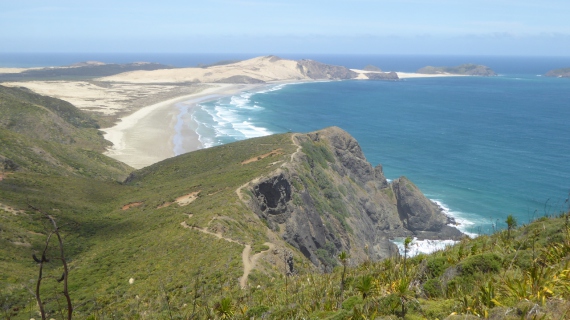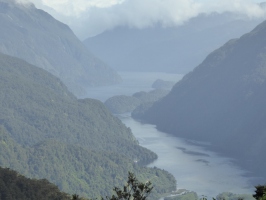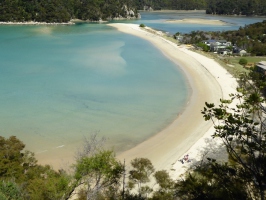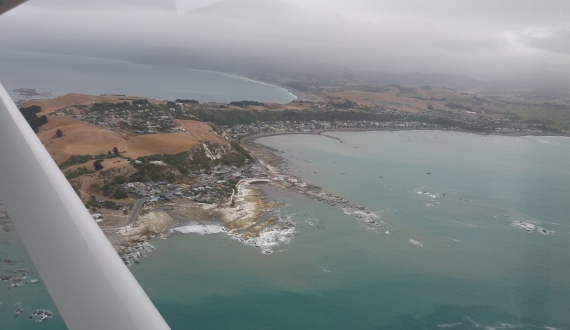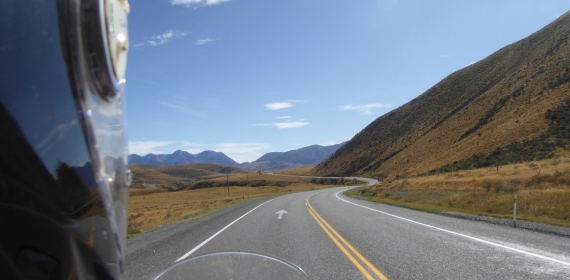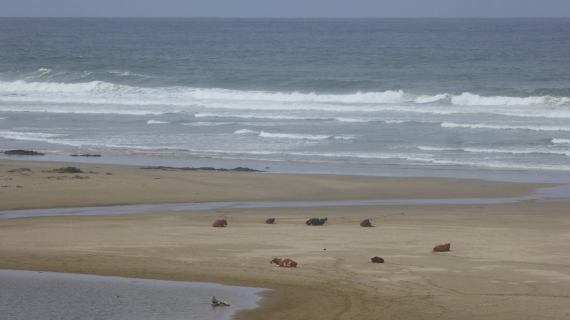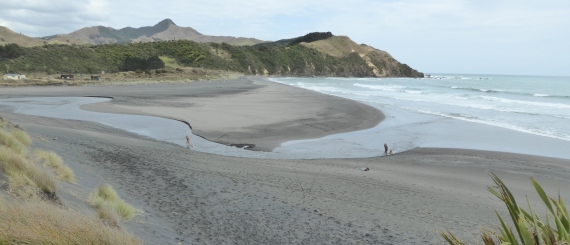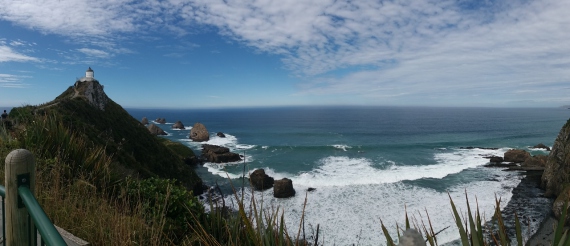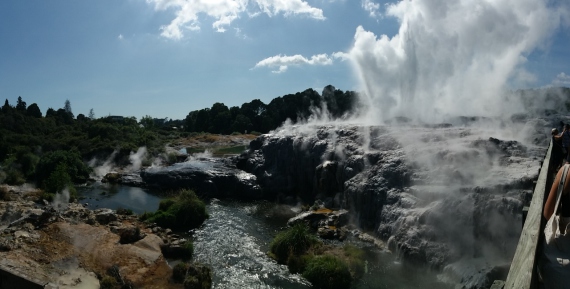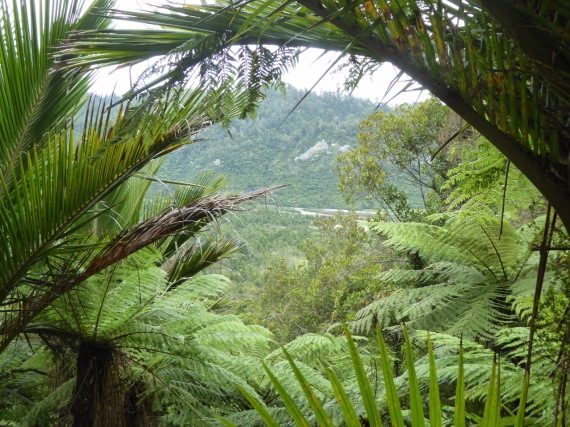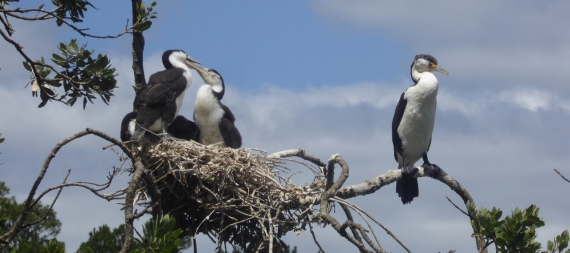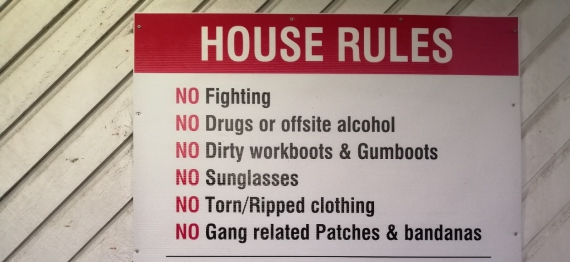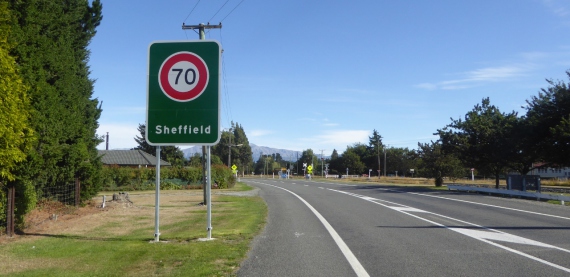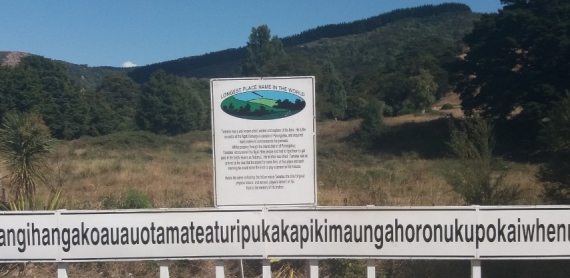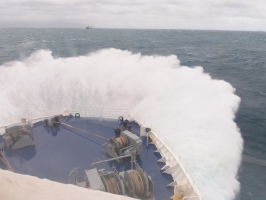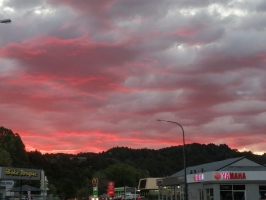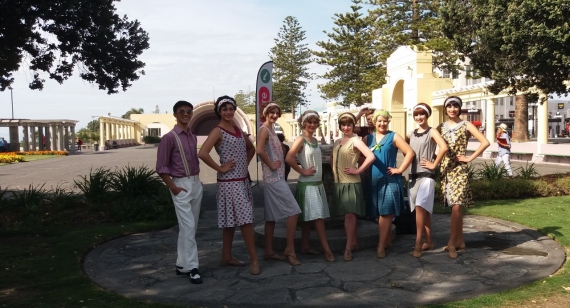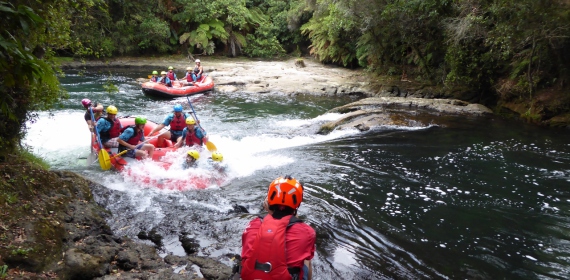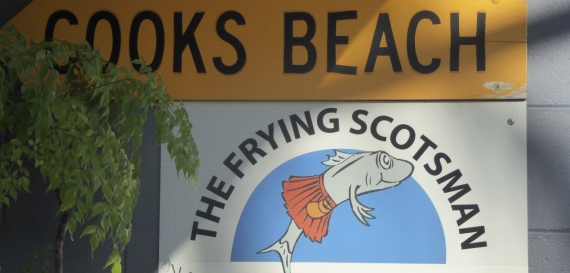New Zealand 2020 - Bob Cocksedge and Sue Crowe
Quite a few years ago Sue and I decided we would like to visit New Zealand for an extended motorbiking tour. ‘Do it once, do it right’ was the plan. As neither of us could get a couple of months off from our jobs, the date was set for 2020, by which time we would both be retired. Although work circumstances changed and we were both actually finished by the summer of 2017, we decided to stick with the 2020 date for our trip. The year 2020 has a nice ring to it, don’t you think? Or perhaps not, as things turned out.......
So, after much study and detail planning, all was set. Six weeks in New Zealand followed by two in Australia en route home. Outbound 1st Feb, home on 31st March. Time to see just about all areas of New Zealand, plus enough time in Oz to see friends in Adelaide (Trevor and Marilyn Green, for those IMTC members who know them), then hop back via the Great Ocean Road and Melbourne to Sydney for our flight home. Easy-peasy - or so we thought.
By the time we flew out on 1st Feb Covid19, or Coronavirus as it was still generally known then, was still only a concern regarding incoming visitors from China. By the time we were due to fly to Oz on 18th March, the world had turned and it had all gone to rats. We never made it to Australia as at very short notice the authorities there imposed a 14 day quarantine for all overseas visitors, effective from about 36 hours before we were due to land in Adelaide. Not very convenient when we were only planning to be in the country 13 days. We ended up staying in New Zealand for another three weeks before getting a flight home at about our 6th attempt, all other attempts having evaporated as hub after hub closed down due to the Virus. But that last three weeks is another story, which may reach the pages of Tourider some other time.
This story is about the six weeks in New Zealand that actually went according to the plan. Six weeks of open, empty, twisty roads. Six weeks of glorious countryside and friendly people. Six weeks when we never got wet on the bike - although it did rain overnight a few times and one day when we were out walking. And six weeks of more than just the biking - there is much to do and see in New Zealand.
My hope is to give a flavour of what New Zealand is about - particularly for the touring motorcyclist - rather than a blow-by-blow daily account. Perhaps it will encourage you to make the long trip yourself - it certainly is a bikers’ paradise - and maybe even help you a bit with your planning. And now that we have the wonderful innovation of colour all the way through Tourider, ‘Why not do it with plenty of pictures?’ I thought. So that’s what follows; if you like the photos, thanks should go mainly to Sue as she took most of them.
The Route
The route was planned by deciding which places we wanted to visit (mainly Sue’s job), then linking them together via the best biking roads, largely based on the information in ‘Great Escapes - A Guide to Motorcycle Touring in New Zealand’ by Peter Mitchell. This is a 164 page spiral bound A5 book, crammed full of useful stuff including 46 routes - rated 1 to 5 smiles - things to see along the way plus tips about accommodation and even weather patterns. An excellent investment!
Starting from Auckland for the first week we headed north, taking in the tourist sites of 90 Mile Beach, Cape Reinga (northernmost point of the North Island), Bay of Islands and the Waitangi Treaty Grounds (where the original agreement between the Maoris and European settlers was signed). Forgive me if I otherwise gloss over this bit as it was done on 4 wheels, partly as it could have been very hot in the far north at that time of year and partly because getting Sue to spend the full 6 weeks on the pillion was perhaps pushing my luck just a bit too much.
Back in Auckland we dropped off the car, picked up the bike and set off to see the rest of the North Island and then The South Island. These screenshots should give the general feel of our biking route, though they are not exact as Google Maps (perhaps wisely) does not recognise the existence of some of the gravel roads and even a small ferry we used.
North Island Route - South of Auckland South Island Route
If you should be planning a trip yourself and want more exact details please give me a ring (details in club handbook). That’s assuming the almost Covid-free New Zealand ever lets visitors in again, of course.
The Costs and the Bike
Petrol is cheap, supermarket food is expensive and eating out is about the same as the UK. But beware, a lot of the eateries shut early by UK standards - anything after 8 pm and you could be struggling in some areas and even in Auckland many places are shutting by 9 pm. For generally quite nice B&B places we paid between £55 and £90 a night for the two of us en-suite with the higher prices, despite going for more basic accommodation, at the most touristy places such as Auckland and Queenstown. If you are prepared to share a bathroom you’ll get it for less, and if you can settle for a backpacker’s dorm bed you’ll get it for a great deal less. We used Booking.com, which was fine with plenty of choice. No doubt there are many alternative ways to book just as successfully.
If you staying long enough in one place to make it worth having a trip to the supermarket and doing some self-catering, there are many options of apartments with small kitchens. Sue reminds me to point out that you’ll typically only get a microwave and hob, not an oven, and that the vintage of many is somewhere around the 1970’s.
A spacious motel apartment with a lovely view overlooking the Waitangi River near The Bay of Islands cost £220 for 3 nights
Waitangi River View
If you plan to rent a bike rather than ship out your own and you want something posh to ride you could pay £100 a day. But we wanted a workhorse and pack donkey - and found one. A 2016 VStrom 650 with full Givi hard luggage, over 70,000 rental kms on the clock, bruised, battered and never missed a beat. It was plenty fast enough for the National speed limit of 100 kph (which people pretty much respect) and plenty powerful enough for overtaking, for which you generally have loads of time due to the lack of traffic. And no worries about scratching it - you’d have never spotted the difference. For a 5 week rental it cost us NZ$3000, which came out at a little over £40 a day at the exchange rate at the time. Slightly unexpectedly it was not from a dedicated rental company but from Colemans, the main Suzuki dealer in Auckland. Typically Kiwi-style friendly and relaxed in their approach, they also rent out riding gear or indeed provide it free for longer rentals.
Don’t forget to allow for the cost of the ferry across the Cook Straight between the North and South Islands - around £200 return.
Our Trusty Workhorse at Te Mata Peak, South of Napier, North Island
When to Go - and for How Long
We planned to be in New Zealand from the beginning of February to mid March, so six weeks and just into their autumn. We had originally thought to go a little earlier but were advised to wait until after the Chinese New Year and after the kids had gone back to school following their summer holidays - in both cases to have less traffic. Of course you could do it in less if you can’t be away for that long, but we actually felt that in hindsight 7 or 8 weeks would have been about right. There again, we spent 17 of our 42 days solely sightseeing and another 6 days doing a mixture of riding and sightseeing, so if you can only manage 4 weeks you could either ride both islands with not a lot of time off the bike or just do one of the islands and leave the other for another trip. In my view, if you can’t manage 4 weeks then wait until you can - it’s a long way to go for anything less than that.
While we were there it was still pretty warm in the sub-tropical far north, but just about manageable. Further south it got cooler of course, but it was never unpleasantly cold. We were fortunate enough to see the first snows arrive overnight on the top of Mount Fyffe whilst we were staying in Kaikoura on the South Island.
Mount Fyffe, from the balcony of our B&B in Kaikoura, South Island
The Capitals
Wellington is the capital city, the departure point for the ferry to the South Island and a nice place to visit; we spent a full day wandering around and enjoyed it. Auckland is a previous capital, your most likely flight arrival point, a much bigger city and not so much to our taste - though it looks as though it might be better when it’s finished. There’s a lot of improvement work going on, which makes an already congested city even worse at the moment. We thought it looked best from a distance - such as the top of Sky Tower, apparently the tallest free standing structure in the Southern Hemisphere.
Auckland Waterfront from the Sky Tower.
The Roads
Lovely and windy (as in twisty) but also sometimes windy (as in ‘Hell’s Bells - this crosswind is a bit wild....’). They are wonderfully empty by UK standards once you get away from the Auckland area. They are emptiest of all in the South Island, but still pretty good in most of the North Island.
If I had a photo of a spectacular pass like say the view from the top of the Stelvio, then it would be included here. But New Zealand is not like that - instead it’s about such a large proportion of the roads being spot on for biking.
In the Maori language New Zealand is Aotearoa, which means The Land of The Long White Cloud. You couldn’t argue that such a name isn’t accurate, but these days The Land of The Long White Camper Van might be even better. We were oft warned about the dangers of inattentive camper-van driving tourists, but in 5 weeks and 4000 miles we only had three wander across the road in front of us in blissful ignorance of our existence - nothing to worry about if you’re used to UK drivers! Due to Covid19 the roads were missing almost all Chinese tourists (who of course are used to driving on the right, not the left as they do in NZ) - perhaps that made our days a little easier.
We were also warned of the locals who don’t give way as they should on the many one-way bridges, but actually never came across any problem. One-lane bridges are common, as the levels of traffic don’t justify the expense of making them wider. They can be anything up to 200 meters long, though the longer ones can have passing places. No nasty contraflow lights, just common sense and looking ahead to decide who goes first.
The road surfaces are generally good with not a lot of pot-holes, but a few roads including one or two bits of State Highway have stretches which are still gravel. Google maps and Streetview can help you check out these, but the route we took did include them from Alfredton to Tinui, through the Tangarakau Gorge on State Highway 43 and for a part of the road from Awakino to Marakopa, all on the North Island. Two up with our normal vast excess of luggage and road tyres, only the first of these was something of a challenge. Beach access roads - which can be up to 10 kms long - are also often gravel but again generally nothing too difficult.
The Fabulous Scenery and Wide Open Spaces
Cape Reinga - the Northernmost Point
Doubtful Sound, Fiordland South Island Able-Tasman National Park.
Doubtful Sound is like Milford Sound but with a lot less tourists and without the washed-out road that Milford had whilst we were there. New Zealand’s ‘Sounds’ were so named by early British explorers on the basis that they were sound places to make harbour - except they weren’t too sure about this one.
An excellent day was spent walking in Able Tasman National Park on the north coast of the South Island. There is no vehicular access, so you get dropped off by a boat and then
picked up again later from further along the coast. Unless you are as hardy as the Kiwis, when you can walk all the way in and out again; takes about 3 days. Being wussy and weary after our warm walk
we decided to paddle along the shorter low tide route which cuts across the estuary you can see at the top right of the picture to get to our pick up point.
Kaikoura Peninsula, East Coast of South Island
On a whale watching flight here we saw precisely zero whales, but the scenery was nice.
Queenstown, South Island
The beauty of Queenstown - seen from a height even though in this case it’s still nice even close up. The mountain range in the background is ’The Remarkables’
En Route to Arthur’s Pass, Southern Alps - probably
This road is probably on the way up to Arthur’s Pass over the Southern Alps, but it doesn’t really matter, there are so many wide open spaces that you will see lots of them
The Empty Beaches and Rugged Coast
Mitimiti Beach on the Far North
The beautiful beaches were generally close to deserted unless you were close to a big town - of which there aren’t many. And even when they are populated, we found it was not always by humans. We have no idea why these cows hadn’t chosen to settle on the beach - certainly there were no fences to keep them there - or indeed why they had formed a defensive circle like wagon trains in old Wild West films.
Kiritehere Beach, West Coast of North Island
Kiriteheri, where the beach is particularly crowded, having got one family on it. It was a warm Sunday afternoon, mind
More famous than either of these is 90 Mile Beach, which is in fact about 55 miles long, obviously. In general the locals take their vehicles onto beaches, but part of this one is
officially a highway. Don’t expect your vehicle hire company to be happy for you to try it, though, especially if you get the tides wrong. Really for heavy duty 4x4s and enduro riders
only.
Nugget Point Rocks in the South East of the South Island
Geysers and Thermal Pools
Famously around Rotorua, but they also occur in some other areas.
Rotorua Thermals
Woodland Walks
Well made and well maintained walking (or tramping, as known locally) routes are plentiful. Many have almost a jungle feel to them. Tree ferns, particularly the Silver Fern or Ponga as it's more often called, are widespread.
Paparoa National Park, North of Greymouth, South Island
Wildlife That Poses for Photos
Despite the relative scarcity of humans - or perhaps due to it - a lot of the wildlife doesn’t seem to get too worried about our presence. This picture - taken with a compact camera from pretty close range - is one of many we accumulated. I call it ‘Three Relaxed Shags’
Wildlife
The People and the Place Names
New Zealanders are by and large friendly, welcoming, trusting, often very generous and definitely straight talking. It sometimes felt a bit like 1950’s UK - in a good way. On several occasions we arrived at the B&B to find a note on the front door telling us to just go on in and make ourselves at home and that our hosts would be home later. It shows that they are not only prepared to trust people they have never met, but also that they are happy to go out leaving door unlocked - and indeed leave a note broadcasting that situation.
However, just like the rest of the world, there are perhaps one or two places it’s best to leave to the locals.
Bar Sign
The place names are almost all either British or Maori in origin. So some are very familiar, others rather less so.
A Town Called Sheffield
We find that sometimes there is balance in the world. In this case it seems to be Maori that balances out Welsh as a language. Whilst Welsh often has no vowels discernible to the uninitiated, Maori place names use more than enough to make up for it. These place names tend to be long, but pronounced by the locals as though they are much shorter. Confusing!
A Town Called Something Else
The longest Maori place name has just the 85 letters
The Cook Straight Crossing
The crossing between the North and South Islands is about the same distance as crossing Dover to Calais, but that’s about where the similarity ends. The journey is scenic, particularly on the South Island where the route into Picton spends close to an hour winding its way up an inlet more like the coast to Scotland than the English Channel. It’s also typically stormy, including on both our crossings.
This is not only a concern if you get a bit queasy - as many did - but also due to the casual approach to tying down bikes. We went by Interislander who specify that you should bring your own tie-down straps and you are responsible for getting it right. We did, and were glad that we did. There was some equipment provided, but bringing our own certainly made for a less nervous crossing.
Cook Straight Crossing Taumarunui Sunset
This wave was one of the many that not only came over the bow but also landed with a mighty slap on the window from which Sue took the picture - and these are not small boats.
Stunning Sunsets
I’m not sure whether it was affected by the earlier bush fires in Australia, but we had some stunning sunsets. Here’s one taken in Taumarunui, conveniently forming a backdrop to the local Yamaha dealer. Taumarunui not only again illustrates the frequency of vowels in Maori place names, but is also the eastern end and handy hopping off point for the Forgotten World Highway.
The Cultural Stuff
New Zealand is not just about roads and spectacular scenery. Not surprisingly it doesn’t compete with Europe for the extent of history, museums and the like, but attractions include the Napier Art Deco Festival, the Te Papa Museum in Wellington, Dunedin railway station and of course most importantly for motorcyclists, the Burt Munro Museum in Invercargill where his work to create The World’s Fastest Indian is remembered. That museum resides within, and is distributed around, a large modern E Hayes hardware store, with quite a few other classic bikes originating nearer to home too. Interestingly different, free to enter and they even provide free coffee.
E Hayes Museum
Napier was largely rebuilt in the Art Deco style following an earthquake in 1931, a basis for their annual festival which includes period vehicles and attire.
Posing at the Napier Art Deco Festival
I don't know who these gals (and one guy) were, but they were happy to pose for anybody
The Less Cultural Stuff (Adventure Sports)
Whether you partake or not you can’t help but notice all the adventure sports activities. Youngsters - and occasionally not so youngsters - keen to put themselves in danger in ever
more interesting ways. 'Adventure Sports', they call it. Have a look at the front two people in the boat - and they were paying to do this.
Water Torture
Fish and Chip Shops
More fish and chip shops than 1950's Britain, but with even cornier names.
The Frying Scotsman
At this one whilst waiting for our order we noticed that everyone else was ordering doughnuts. Assuming that these would be something different to what we might expect we ordered a
couple too, to find they are actually just doughnuts. The ring ones you used to buy from vans on the seafront in the 1960's. Well, there ya go.
Possum Pancakes
And finally, New Zealanders are very protective of their native wildlife, much of which is under threat from non-native species introduced by humans (including the humans themselves, in some cases) Possums, introduced from Australia, are an out of control pest as they have no natural predators. There are about 20 for every human. So now the Possums have unnatural predators - NZ drivers who will swerve to try to hit them on the roads at night. The result is possum pancakes, frequently seen on many roads. You'll probably be pleased to hear that I don't have a photo


